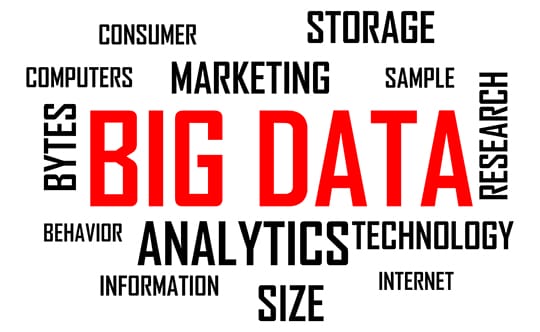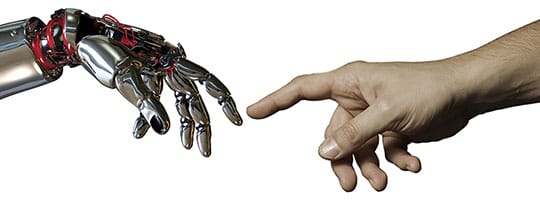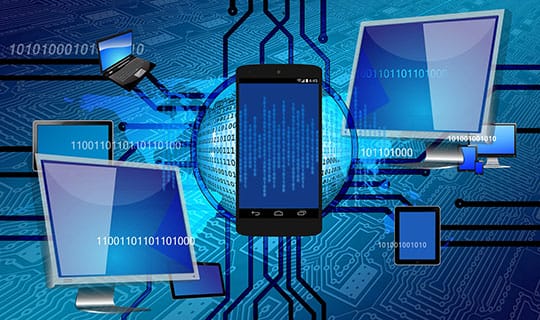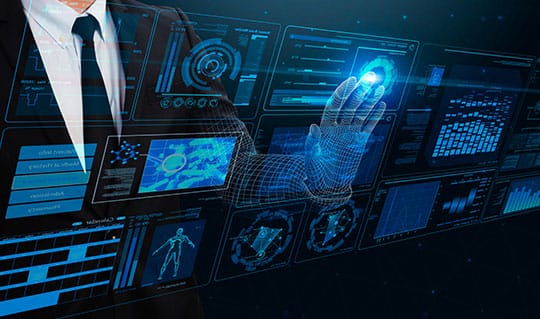Artificial intelligence is undoubtedly one of the hottest topics these days. We often find ourselves interacting with AI without even knowing it. Various tech giants such as Facebook, IBM, Google, and Microsoft are all engaging in different AI-initiatives. They are competing on building digital personal assistants such as Facebook’s M, Apple’s Siri and Cortana from Microsoft.
Mark Zuckerberg even plans to build his own model of Iron Man’s Jarvis to run his home. Even the World Economic Forum, which was held in Davos, emphasized that artificial intelligence will usher in an industrial revolution, which is predicted to change society. We may be interacting with AI without even knowing it.
Recommended Read: 11 Technological Trends that Will Rule USA in 2017.
1. Chatbots
Chatbots are services powered by rules and artificial intelligence. You interact with them through a chat interface. This service may be different things, ranging from fun to functional. And it could work from any major chat product such as Facebook Messenger, Telegram, Slack, or Text Messages.

For instance, if you wanted to purchase some shoes from an online store, you would visit their website, and look around until you pick the shoes you want and buy them. If the store has a bot, you would be able to message them on Facebook. It will ask you what you want, and you’d tell it.
Rather than browsing the website, you’ll have a conversation with a bot, mirroring the sort of experience you’d get when you visit the retail store.
Recommended Read: Chatbots: The Future of Business Marketing.
2. Digital Assistants
Digital assistants such as Siri, Cortana, as well as Amazon’s Alexa can do virtually anything from assisting you as you schedule meetings and helping you shop. That’s in addition to finding a joke or solving a nagging puzzle. What is impressive is not just that they are capable of answering your requests, but that they can learn by talking to you more. By interacting with them, these assistants learn about your voice, your schedule, your tastes. And by doing this, they learn how to work with you better as well as serve you.

Of course, the software is not yet perfect, but it is improving. When Siri was launched at first, she had problems recognizing some accents and could answer only fairly basic questions. Today, personal assistants such as Hound can answer complex and multiple part questions with ease. While we are still speaking differently during our interaction with machines (linguists call this “dialect leveling”), Siri presently understands more languages and dialects than ever. In fact, the voice recognition tech has advanced more in the past two years than the decades before.
AI-powered services, products, and even robots could eventually take over most aspects that are not deemed pleasant by humans or dangerous. That includes occupations such as assistances or even security guards.
3. Big Data
Every form of intelligence needs to be taught. The human brain, which has been genetically prepared to categorize things, needs to see different examples before it will be able to distinguish between dogs and cats. That is even truer for the artificial minds. The best-programmed computer must play a thousand chess games before it becomes good.

Part of the breakthrough of AI lies in the avalanche of data about our world and provides the coaching it requires. Massive databases, web cookies, self-tracking, decades of search results, online footprints, Wikipedia, terabytes of storage, and the whole digital universe became teachers that made AI smart. Tasks that sound impossible to the human mind, such as sorting through millions of Excel rows, organizing hundreds of TV providers by the zip code, discovering behavioral patterns from hundreds of columns of information, performing complex calculations in a matter of seconds, etc., are incredibly simple for artificial intelligence.
Recommended Read: Top 10 Most Valuable Strategies for Utilizing Big Data.
4. Universal Translator

Also known as the Skype Translator, the software translates your speech in real-time. This is allowing you to talk naturally with someone who speaks a different language. The AI software scrutinizes lots of translated sentences online until it becomes perfect at guessing how any clutter of words will translate. When it comes to voice recognition, the system breaks down all samples of the spoken word and analyzes them until it gets a sophisticated grasp of how sounds come together to form speech.
Recommended Read: Impacts on Machine Translation.
5. Parallel Computation
Thinking is an intrinsically parallel process, millions of neurons firing synchronously to create identical waves of cortical computation. Building a neural network, which is the primary architecture of the AI software requires different processes to occur simultaneously. Every node of the neural network closely imitates a brain neuron—mutually interacting with its counterparts to make sense of any signals it receives. For it to recognize a word, the program should be able to hear the phonemes as they relate to one another. In the same vein, to identify any image, it has to see all pixels—both severely parallel tasks. But until recent times, the regular computer processor could handle one task at a time.

This began to change over a decade ago, with the introduction of a new type of chip, known as a GPU or graphics processing unit. It was initially made for the fiercely visual—and parallel—needs of video games, where millions of pixels had be recalculated countless times per second. That required a specially designed parallel computing chip that was included as a complement to the PC motherboard. This parallel graphical chips technology worked, and the gaming industry soared.
Its discovery unlocked brand new possibilities for neural networks, and it can include millions of connections between nodes. Traditional processors needed several weeks to compute all the possibilities in one hundred million-parameter neural net. Today, the neural nets running on these GPUs are generally used by various cloud-enabled firms like Facebook to identify friends in photos, or in Netflix, to make careful recommendations for its over 50 million subscribers.
Final Words: Artificial Intelligence and the Future

Visions of the near future have been bountiful and diverse over the decades. We have come so far along and are now experiencing what we could only see in sci-fi movies. Today, we can chat with computers and have virtual assistants to help us with our daily tasks. All of this is done by interacting with AI, often without us even realizing it.
This article is written by Loana Briean. A self-taught enthusiast, Loana occupies her time reading SEO & social media blog. She also oversees the marketing strategy of Wireseek.org. She enjoys analyzing the behavioral patterns of customers & follows the latest news on AI developments. You can follow Loana on Twitter for more updates.





